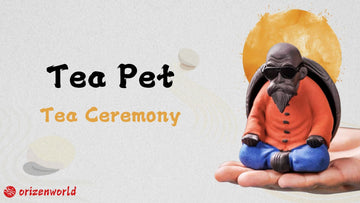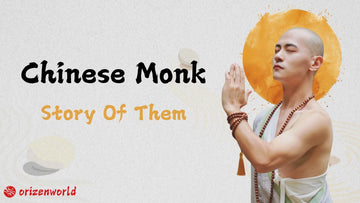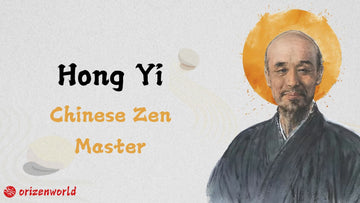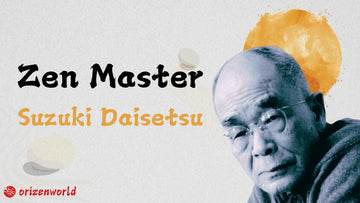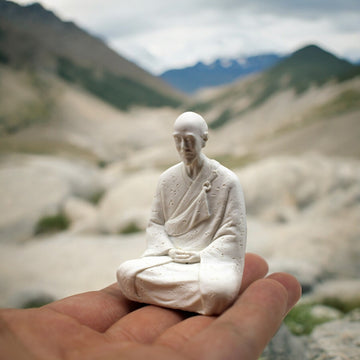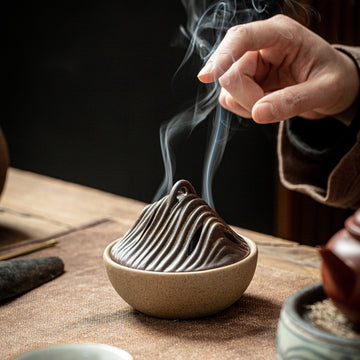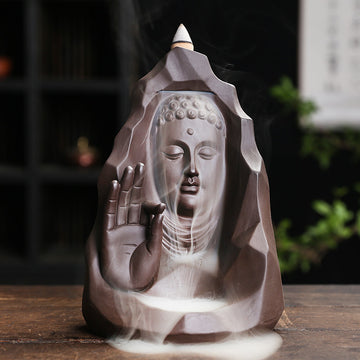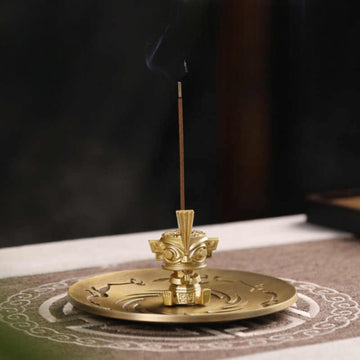If you've ever watched a Japanese or Chinese tea ceremony, you may have noticed a small figurine on the tea table. These figurines, often shaped like animals such as cats, dogs, frogs, or rabbits, are known as "tea pets." They are typically placed on the tea table during tea ceremonies and are believed to bring luck and good fortune. Tea pets are adored for their charm and cuteness, making them an interesting addition to the tea experience.
In this article, I will provide you with detailed information about tea pets, including what they are, their significance, and tips for selecting the perfect one. Stay tuned for a closer look at these adorable tea companions and how they can enhance your tea rituals!
Tea pets, known as "茶宠" in Chinese, are small figurines traditionally placed on tea tables during Chinese Tea Ceremonies. Made primarily from materials like purple clay (紫砂) or Chengni clay (澄泥), tea pets are often crafted into animal or human figures, such as frogs, cats, mythical creatures like Pi Xiu (貔貅), and symbols of fortune. The unique aspect of tea pets is that they "drink" tea, as tea is poured over them during the tea ceremony. Over time, this process of tea absorption nurtures the figurines, giving them a smooth, polished texture and infusing them with the fragrance of tea.
The origin of tea pets can be traced back to the Tang and Song dynasties, during the height of tea culture in China. A reference in a poem from the Song dynasty, "寄眠云处士" by the poet Song Wu, mentions using tea to nourish small figurines. This tradition grew from the belief that tea pets would become more charming and fragrant with use, making them an integral part of the tea-drinking experience. Tea pets are not only decorative but also serve as symbols of good fortune, with many designs signifying wealth, prosperity, and auspiciousness.

Tea culture flourished during the Song Dynasty, introducing refined tea ceremonies and artistic practices that shaped traditional Chinese tea rituals.
In Chinese tea culture, tea pets hold significant importance. Some are crafted with exquisite skill, turning them into valuable collectibles and art pieces. These tea pets often feature intricate designs, with hollow sections that create special effects, such as bubbles or water spouts when hot water is poured over them. These effects add an element of magic and wonder to the tea ceremony, enhancing the overall experience.
Another distinctive feature of tea pets is their unique anatomy. Many tea pets have a mouth but no anus, symbolizing a traditional Chinese belief: "财源广进,滴水不漏" (fortune flows in, nothing leaks out). This design reflects the desire for wealth and prosperity, suggesting that fortune will enter your life and remain steady, just like the tea that nourishes the pet.
Tea pets are a beautiful fusion of culture, craftsmanship, and tradition. Whether you're a seasoned tea enthusiast or new to the practice, tea pets offer a way to connect with the rich history and philosophy of Chinese tea culture. They bring joy and good fortune, while also serving as a charming companion to your tea-drinking rituals.
The origin of tea pets can be traced back to the Tang and Song dynasties, when tea drinking became a popular cultural practice in China. During this time, tea enthusiasts began using small figurines to enhance their tea rituals. The concept of tea pets is mentioned in a poem by Song dynasty poet Song Wu, where he describes using tea to nourish these figurines, which gradually became smoother and more fragrant over time. This practice symbolized the connection between tea, culture, and the figurines.
Tea pets were typically made of clay, such as Zisha or Chengni, and became more refined as tea culture evolved. The figurines were not only decorative but were believed to bring good fortune and positive energy. The process of rubbing tea on these figurines and letting them soak in the tea's aroma became a cherished tradition, adding to the overall tea experience. Over time, tea pets grew in popularity and became an essential part of Chinese tea culture.
Tea pets are not just decorative objects; they are rich in symbolism and meaning, deeply connected to Chinese culture. Traditionally, tea pets are believed to bring good luck, fortune, and happiness to their owners. The act of pouring tea over these figurines is thought to infuse them with positive energy, which is then transferred to the person drinking the tea. This makes them not only a charming addition to the tea table but also a symbol of prosperity.
Each tea pet often carries its own specific symbolism. For example, the frog is commonly associated with wealth, as it is a symbol of good fortune and financial success in Chinese culture. Similarly, Pi Xiu Figurine, a mythical creature resembling a lion, is believed to attract wealth and ward off negative energies. Other tea pets, like the turtle, are symbols of longevity and good health, while the cat represents protection and good relationships.
The use of tea pets also reflects a deeper cultural philosophy: the connection between humans, nature, and the universe. By nurturing these figurines with tea, owners hope to invite harmony, abundance, and peace into their lives, making tea pets an important part of the tea-drinking ritual.
Tea pets are typically made from a variety of materials, each with its unique qualities and significance in Chinese tea culture. The most common materials include clay, porcelain, and jade, each offering different textures and aesthetic values that enhance the tea-drinking experience.

Among these, Zisha clay (紫砂) is particularly famous for its ability to absorb the tea's fragrance, allowing the figurine to gradually become smoother and more aromatic over time.
Clay, especially Zisha clay from Yixing, is highly valued for its porous nature, which helps the tea pet absorb tea and develop a rich patina with use. This material is often considered a symbol of durability and authenticity, reflecting the traditional craftsmanship of tea culture. Zisha clay tea pets are cherished by collectors for their beauty and ability to retain the tea's scent.
Porcelain tea pets, on the other hand, are known for their delicate appearance and smooth texture. These figurines are often hand-painted with intricate designs and are considered symbols of elegance and refinement. They are highly regarded for their aesthetic value and are a popular choice for tea lovers who appreciate fine craftsmanship.
Jade tea pets, though less common, are highly prized for their rarity and association with wealth and prosperity. The natural beauty of jade is believed to enhance the tea experience and bring good fortune to its owner. Jade tea pets are often passed down through generations as treasured heirlooms.
Tea pets come in various shapes and designs, each symbolizing different aspects of Chinese culture and beliefs. The most popular tea pet designs include animals, mythical creatures, and deities, each carrying its own unique symbolism and meaning.
One of the most famous tea pet shapes is the Golden Toad (金蟾), a symbol of wealth and prosperity. The toad often carries a coin on its back, representing money flowing into the home. If the toad's mouth holds a coin that spins, it symbolizes the act of earning wealth. Without the coin, it symbolizes attracting money.

The Golden Toad-shaped tea pets resemble Gama Bunta from Naruto, symbolizing wealth and prosperity with a coin-bearing design.
Another popular tea pet is the Pixiu (貔貅), a mythical beast known for its ability to attract wealth. The Pixiu is often depicted with a fierce expression and is believed to bring fortune and protect the home. Its unique feature is that it has no anus, symbolizing wealth that enters but cannot leave. The male Pixiu represents wealth, while the female represents the treasury. Pixiu are typically seen in pairs, signifying the protection and accumulation of wealth.
The Elephant is also a common design, symbolizing good luck and prosperity. In feng shui, elephants are associated with water, which is considered the symbol of wealth. Elephants are known for their peaceful nature, making them a symbol of harmony and the attraction of wealth.
Another popular tea pet is the Cabbage (白菜), a symbol of financial abundance, as the term “bai cai” sounds similar to "bai cai" (摆财), which represents wealth rolling in. Similarly, the Pig symbolizes abundance and prosperity, making it a favorite among tea drinkers.
Other designs include the Monkey, which can symbolize promotion and success, particularly when paired with a horse. The Turtle represents longevity and good fortune, and it is often associated with reunion and wealth, as its name sounds like "return" in Chinese, symbolizing family unity and prosperity. Each of these tea pets carries its own distinct meaning, offering tea drinkers the opportunity to choose one that resonates with their personal wishes for health, wealth, and happiness.
The placement of tea pets on the tea tray is crucial for maintaining balance and harmony or Feng Shui. Traditionally, tea pets are placed in the upper left corner of the tea tray or in a small row at the front. This arrangement ensures they are both aesthetically pleasing and accessible during the tea ceremony. Careful positioning reflects respect for these symbolic companions.
When placing animal-shaped tea pets, it’s essential to consider their compatibility with your Chinese zodiac sign to avoid potential conflicts. Proper positioning aligns with feng shui principles, which combine natural laws and cultural beliefs to create a harmonious environment.
Specific tea pets have unique placement rules. For example, the golden toad (金蟾) should be positioned carefully. A toad with a coin in its mouth should face inward, symbolising wealth accumulation, while one without a coin should face outward to attract fortune. However, when facing outward, it should not directly point at the main door but slightly off to the side.
The pixiu (貔貅), a fierce mythical beast, is best placed in the living room rather than the bedroom due to its intense energy. Its head should face outward, ideally towards a window, but not towards the bed or directly at oneself.
Other tea pets like the dragon turtle (龙龟) and qilin (麒麟) also have specific rules. Dragon turtles should face the door for good luck but must not be placed belly-up. Qilin, often placed in the study or bedroom, should face the entrance to invite prosperity and positive energy.
Caring for a tea pet is an enjoyable process that enhances its charm and longevity. While tea pets can be nurtured with any type of tea, Pu-erh, black, or red teas are commonly recommended. These teas tend to produce a rich, glossy finish over time. For optimal results, stick to one type of tea to ensure consistent nourishment.
Choose a tea pet of moderate size, as this allows most of its surface to retain and store water effectively. Oversized tea pets may be less practical for daily tea rituals and may not yield the same aesthetic effects as smaller, more manageable ones.
Always use hot tea to rinse your tea pet instead of plain hot water. The tea’s natural properties contribute to the patina and texture of the surface. Additionally, a tea brush or soft brush, such as a calligraphy brush, should be used to gently apply tea to the pet. Over time, this will create a beautiful, lustrous sheen that brings your tea pet to life.
A tea pet gradually changes color with regular hot tea pouring, developing a rich, glossy patina over time.
Daily maintenance includes brushing off dust and polishing with a tea cloth. Regular cleaning ensures your tea pet stays radiant and allows for delightful features, like bubble-blowing or eye-opening effects, to emerge naturally.
Avoid soaking your tea pet in tea for convenience. While this may speed up the process of colour change, it often results in uneven hues and dullness, which detracts from its overall appeal. Patience and care are key to cultivating a truly stunning tea pet.
When purchasing a tea pet, it’s essential to consider cultural significance, material quality, and proper care practices. Here are key tips and cautions to help you make an informed choice.
First, avoid selecting zodiac-themed tea pets that clash with your Chinese zodiac sign. For example, those born in the Year of the Rat should refrain from choosing tea pets representing the Ox or the Sheep, as such combinations are traditionally considered inauspicious.
If you opt for deity-inspired tea pets, such as Guanyin, Guan Yu, or Maitreya Buddha, ensure you can genuinely respect and revere these figures. Such tea pets are often imbued with a deeper symbolic meaning, requiring sincere reverence from their owners.
Only use clean, fresh tea water to maintain your tea pet. Avoid using stale or spoiled tea, as it can tarnish the tea pet’s surface and diminish its aesthetic and symbolic value.
Finally, understand the cultural story and significance behind each tea pet design. Choose one that aligns with your personal values and beliefs to respect the rich heritage of tea culture. By following these guidelines, you can enjoy the charm and longevity of your tea pet while honouring its cultural roots.

